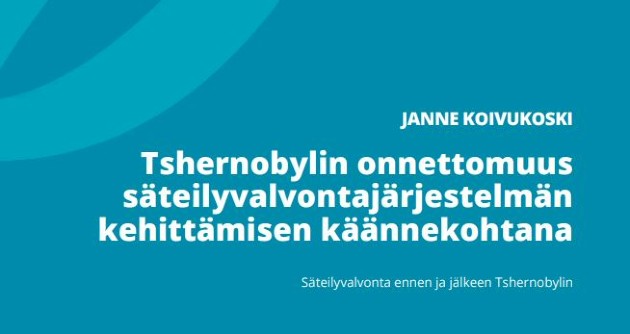
Chernobyl marked a turning point in the evolution of radiation monitoring

A new study illustrates the development of radiation monitoring from the 1950s nuclear tests up to the present day. It showcases the role of the Chernobyl accident in the improvement of radiation monitoring.
The doctoral research of Janne Koivukoski, MSc, accounts for the evolution of radiation monitoring starting from the 1950s nuclear weapons tests and up to the present day. The Chernobyl nuclear accident played a role in the subsequent improvement of radiation monitoring. It brought about new requirements for radiation monitoring, information, situational awareness activities and data processing, and necessitated a renewal of the monitoring network.
Koivukoski’s doctoral research explores the effects of radiation events, particularly those of the Chernobyl accident, on the advancement of the radiation monitoring system in Finland. The study describes the process of improving the relevant measurement and data processing technologies and the network of monitoring stations. It also explains how the potential of technological advances has been utilised to this end.
Measurement data is key for detection, alerting and early warning
Real-time measurement data on radiation and meteorological information are needed to detect a radiation incident, alert the authorities and warn the population of the need for protective measures. Such information and data must be readily available to the operating organisations. This can be ensured with the help of the current country-wide automated monitoring network that is mainly based on Geiger-Müller measurement equipment, and by using weather observation data.
The situation picture that is needed to decide on protective measures and spread information to the population can be formed quickly, and scenarios of the unfolding of the event can be designed without delay. This has been taken account of when developing the radiation monitoring network ever since the early days. Changes in threat scenarios and in measurement and data transfer technology during the over 60-year-long history of the Finnish radiation monitoring system used for early warning purposes have called for continuous updating of the system.
Information on the development of radiation monitoring in Finland
The study contains new information on the evolution of radiation monitoring in Finland, use of measurement techniques, processing of results, and information to the population. This interdisciplinary research combines radiation measurements and meteorology. Its results are useful for the further development of radiation monitoring activities, and this doctoral dissertation also provides a useful source for training in radiation monitoring.
The summary gives a comprehensive description of radiation incidents that have threatened the population, starting from the 1950s terrestrial nuclear weapons tests and up until the destruction of the Fukushima power plants caused by the tsunami of 2011. It describes thoroughly the radiation monitoring system’s technological and organisational development and includes an analysis of further development needs identified on the basis of the results.
The dissertation online (with an abstract in English) https://erepo.uef.fi/handle/123456789/24853 Link to an external website
Inquiries:
Janne Koivukoski, Janne.Koivukoski(a)intermin.fi, tel. +358 50 047 8252
The latest
 Press release
Press release
 Press release
Press release
 Press release
Press release
 Press release
Press release


